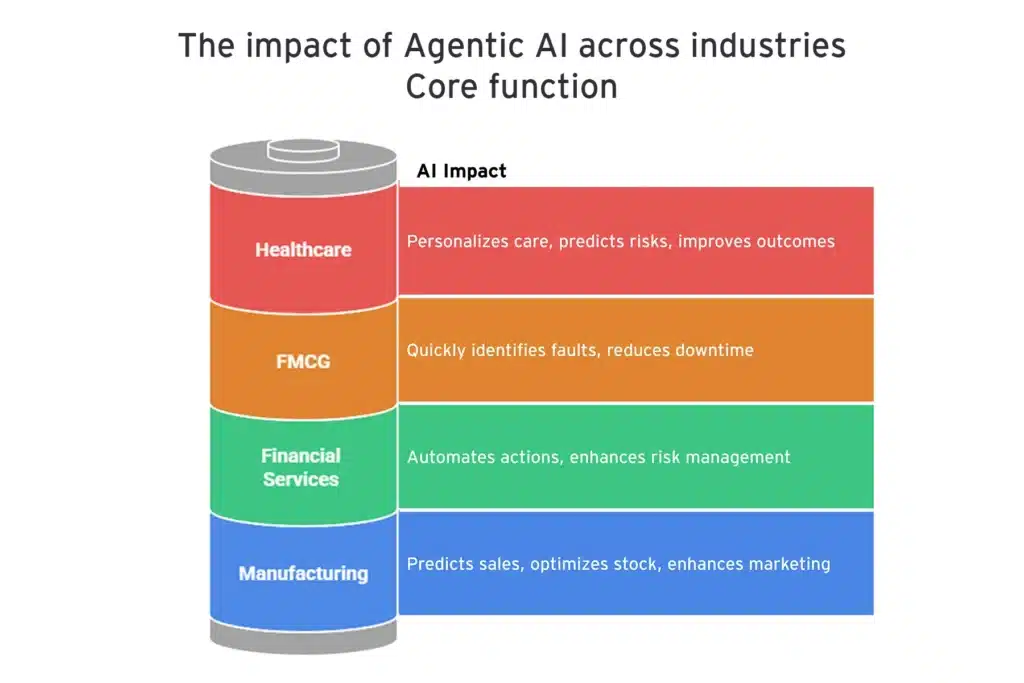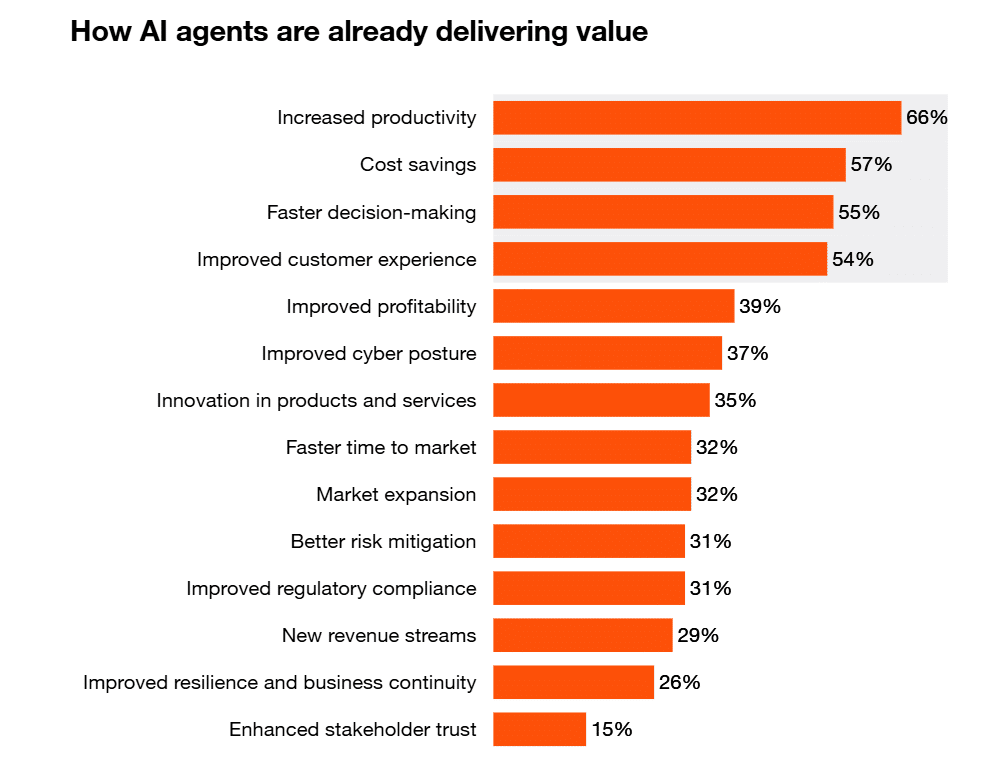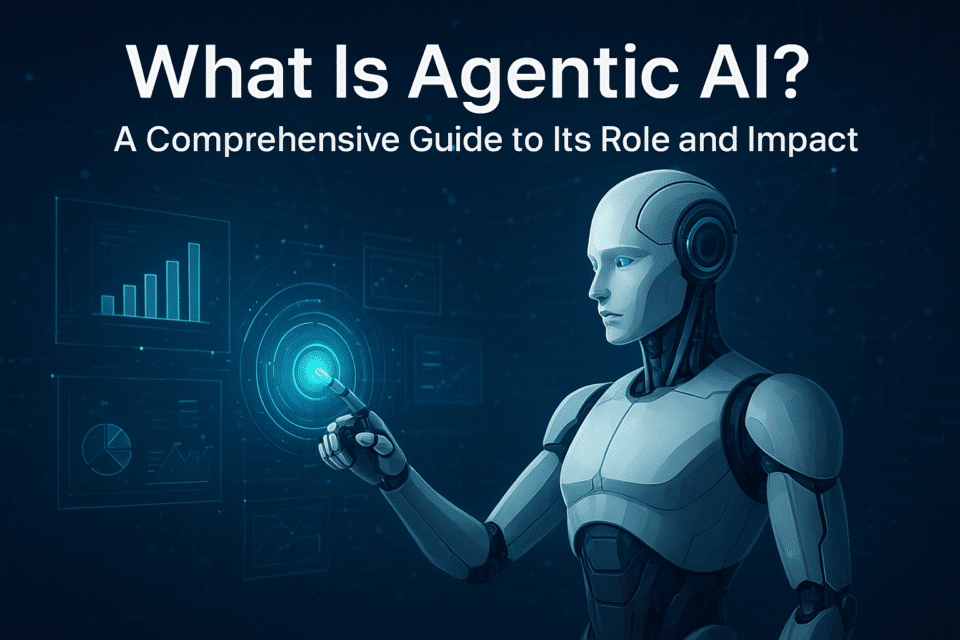There is a new term on the move in the fast-paced development of artificial intelligence, which is Agentic AI, and why does it matter? Compared to traditional AI systems, which merely react to prompts or to a set of rules, Agentic AI is a step into autonomy and choice. It is no longer about AI creating content or answering questions, but rather about AI systems capable of reasoning, planning, acting, and adapting to real situations.
As a business, developer, or tech leader, you need to know about Agentic AI. As AI Agents in marketing campaigns, high-level healthcare diagnostics, etc., its influence is already transforming industries. In this guide, we shall explore more about how Agentic AI works, its key components, actual Agentic AI applications, and the future of the technology.
Understanding Agentic AI
So, what is Agentic AI in straightforward terms? Artificial intelligence systems that are programmed with autonomy, allowing them to make decisions and do tasks with minimal human oversight, are known as agentic AI. Unlike existing reactive AI, which merely reacts to certain inputs, Agentic AI is capable of actively pursuing goals, learning, and upgrading its approach over time.
Key Differences from Traditional AI
- Reactive vs. proactive: Traditional AI responds to a query when questioned. Agents AI detects its problems and goes about the solution.
- Rule-Based vs. Adaptive: In place of strict rules, Agentic AI changes with changing circumstances.
- Assistance vs. Partnership: While standard AI is used as a tool, Agentic AI is used as a co-worker and is able to take on complex and autonomous workflows.
Core Characteristics
- Independence: Works without being closely supervised.
- Goal-Oriented: Achieves goals instead of merely following orders.
- Contextual Awareness: Perceives and adjusts to the environment and surrounding information.
- Continuous Learning: The learning process gets better over time with feedback and interaction.
Core Components of Agentic AI
To learn more about the functioning of Agentic AI, we have to break it into its core components:
- Cognitive Architecture – This is the brain that can think, solve problems, and plan in the long term.
- Multi-agent Systems – A system where two or more agents (AI) work together to accomplish complex tasks (e.g., autonomous vehicles communicating with one another).
- Autonomous Workflow Orchestration – The agents that coordinate several tasks at once without human interference.
- Human-in-the-Loop – Systems to make humans maintain control over sensitive decisions.
All of them combine to create autonomous agents AI that can operate in various business and industrial ecosystems.
Do you know: Microsoft Build 2025: Ushering in the Age of AI Agents and the Open Agentic Web
The Role of Agentic AI in Modern Technology
Agentic AI is not a future concept but is already transforming industries.
Integration with Generative AI: Large Language Models (LLMs) can be made smarter with an autonomous set of capabilities and become AI agent tools performing complex instructions.
Enterprise Automation: Agentic AI coordinates processes such as IT management, compliance checks, and financial operations in addition to simple RPA.
Digital Transformation Catalyst: Organizations embracing AI Agent Development Services are redesigning their operations to be agile and strong.
Assistants to Employees: Although older AI performed the role of assistants, Agentic AI performs the role of a digital employee with the ability to make informed decisions.
Applications and Use Cases of Agentic AI

The most exciting aspect lies in real-world Agentic AI applications across industries.
1. Agentic AI for Business Operations
The Agentic AI automates the management of the process, covers the supply chain logistics, compliance checks, and enterprise resource planning. The examples of Agentic AI consist of workflow optimizers and autonomous scheduling systems, which minimize the human bottlenecks.
2. Agentic AI for Healthcare
Robotic systems are used in healthcare to help in diagnostics, drug discovery, and managing patient care. They study large volumes of medical information to recommend personalized treatment.
3. Agentic AI for Finance
Finance is a prime adopter of AI in autonomous for fraud detection to investment decisions for advisors. The Agentic AI tools are used to analyze risk profiles on a real-time basis by banks.
4. Agentic AI for Customer Service
Agentic AI chatbots of the next generation can easily predict the needs of the customers, offer solutions in advance, and escalate the issues only when it is required.
5. Agentic AI for Marketing
AI Agents in marketing are being applied in optimization of the campaign, personalization of customer journey, and even competitive intelligence. This facilitates businesses to attain the accuracy of targeting at scale.
6. Agentic AI for Manufacturing and Industry 4.0
The applications of agentic AI in manufacturing are predictive maintenance, autonomous robotics, and smart supply chain networks.
7. Software Development
Tools such as AI Agents are used to generate code, test, debug, and deploy code by developers. Businesses increasingly hire AI Agent developers to build intelligent assistants that reduce manual workloads.
Benefits and Opportunities of Agentic AI

The adoption of Agentic AI unlocks a spectrum of opportunities:
1. Agentic AI Ensures Enhanced Efficiency
Repetitive and complicated tasks can be autonomously executed by agentic AI without errors. Companies experience quicker operations and reduced costs of operations.
2. Agentic AI Brings Scalability of Operations
Contrary to human-specific processes, Agentic AI can easily be scaled to handle increased workloads to provide a stable performance even when a business is expanding.
3. Improved Decision-Making
The real-time analysis of large volumes of data by using Agentic AI brings actionable information, making decisions smarter, faster, and data-driven.
4. Personalized Customer Experience
With AI agents, the customer needs can be predicted, customized recommendations can be offered, and active assistance can be provided, which increases engagement and satisfaction.
5. Cost Optimization with Agentic AI
By automating tasks using Agentic AI tools, the companies will minimize the number of redundant human resources, which will assist in reducing the operational costs, but not the quality.
6. Agentic AI for Innovation Enablement
Agentic AI enables companies to experiment with new business models, products, and services by replacing operational processes that take time.
Challenges and Ethical Considerations
While promising for businesses, Agentic AI also poses challenges.
1. Ethical Risks and Bias
The agentic AI systems have the potential to recreate human biases or make some morally dubious decisions. It is very important to be fair and unbiased.
2. Security Vulnerabilities
Cyberattacks can affect autonomous systems, which may be misused or maliciously manipulated when it comes to AI agents.
3. Lack of Transparency
The decisions made by the AI agents are not always easily interpretable, and this is why explainability and trust have become significant issues for businesses.
4. Over-Reliance
Overreliance on Agentic AI may result in less human control, which in turn may pose a threat of mistakes or unexpected consequences.
5. Compliance and Regulatory Gaps
The current rules and regulations tend to be outpaced by technological innovations, and complying with the autonomous AI implementation is difficult.
6. Integration Complexity
The implementation of Agentic AI into the current workflows and systems needs to be planned and requires technical skills and resources that can be a disadvantage to some organisations.
The Future of Agentic AI
Looking ahead, Agentic AI is set to redefine how businesses operate.
1. General-Purpose AI Agents on the Rise
The direction of Agentic AI will be to expand on single-task systems, with the development of multi-domain, general-purpose agents that can handle multi-task, interdisciplinary workflows.
2. Deeper Integration with Generative AI
In the future, Agentic AI tools will be able to merge reasoning and creativity, which will enable AI agents to not only perform tasks but also to be creative when finding solutions.
3. AI-First Business Models
Companies will build processes, products, and services that are based on autonomous AI capabilities, providing new methods of value generation.
4. Collaboration with Humans
Rather than substituting the jobs, Agentic AI will work as a digital co-worker, performing the routine tasks as humans concentrate on creativity and strategic decisions.
5. Growth in a Multi-Industrial Society
Applications of Agentic AI will continue to grow and boost the transformation in all industries, especially healthcare and finance, to marketing and manufacturing.
6. Integration with IoT and Edge Computing
Autonomous agents AI in the future will integrate with the IoT devices and edge systems, enabling decisions in real-time on a large scale.
Concluding Thoughts
The emergence of the Agentic AI is a turning point in the development of artificial intelligence. Autonomous agents AI are no longer reactive but rather are taking on proactive roles and decision-making that can change industries. The opportunities are vast in terms of providing Agentic AI uses in healthcare and finance, as well as AI agents in marketing and enterprise automation.
Regulatory gaps, security issues, and ethical risks should be overcome in order to create systems that are open, reliable, and trustworthy. Companies that are early adopters and strategic will be able to have a considerable competitive advantage. Their future will be in the hands of the responsible ones using AI Agent Development Services or adopting AI tools.
Author Bio:
Nathan Smith is a Technical Writer at TechnoScore with extensive knowledge in software documentation, API guides, and user experience. Mastering HTML, CSS, JavaScript, and tools like JIRA and Confluence, Nathan’s expertise covers Application Development, Software Engineering, AI/ML, QA Testing, Cloud Management, DevOps, and Staff Augmentation (Hire mobile app developers, hire WordPress developers, and hire full stack developers etc.).


